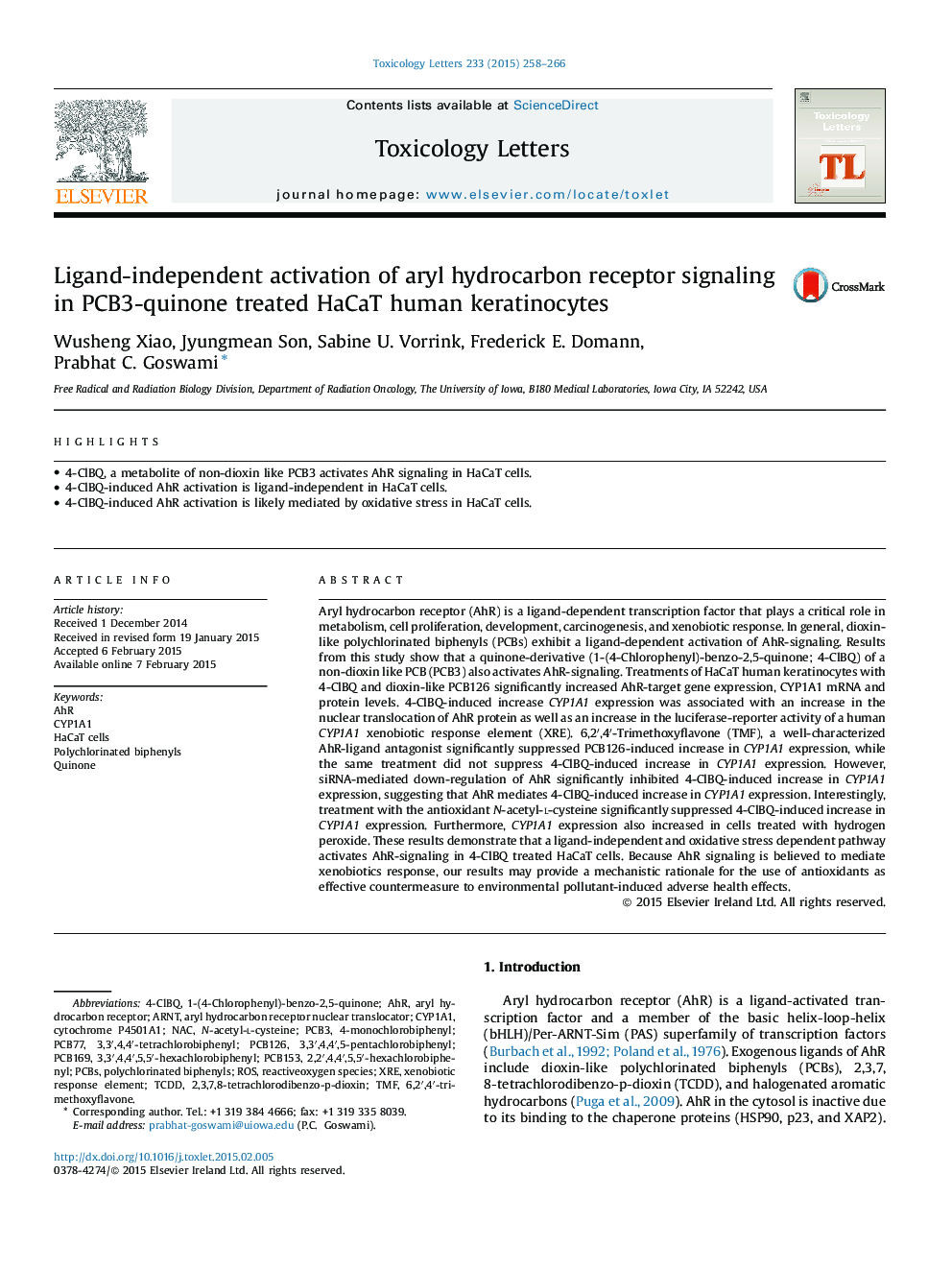| کد مقاله | کد نشریه | سال انتشار | مقاله انگلیسی | نسخه تمام متن |
|---|---|---|---|---|
| 2598879 | 1133158 | 2015 | 9 صفحه PDF | دانلود رایگان |

• 4-ClBQ, a metabolite of non-dioxin like PCB3 activates AhR signaling in HaCaT cells.
• 4-ClBQ-induced AhR activation is ligand-independent in HaCaT cells.
• 4-ClBQ-induced AhR activation is likely mediated by oxidative stress in HaCaT cells.
Aryl hydrocarbon receptor (AhR) is a ligand-dependent transcription factor that plays a critical role in metabolism, cell proliferation, development, carcinogenesis, and xenobiotic response. In general, dioxin-like polychlorinated biphenyls (PCBs) exhibit a ligand-dependent activation of AhR-signaling. Results from this study show that a quinone-derivative (1-(4-Chlorophenyl)-benzo-2,5-quinone; 4-ClBQ) of a non-dioxin like PCB (PCB3) also activates AhR-signaling. Treatments of HaCaT human keratinocytes with 4-ClBQ and dioxin-like PCB126 significantly increased AhR-target gene expression, CYP1A1 mRNA and protein levels. 4-ClBQ-induced increase CYP1A1 expression was associated with an increase in the nuclear translocation of AhR protein as well as an increase in the luciferase-reporter activity of a human CYP1A1 xenobiotic response element (XRE). 6,2′,4′-Trimethoxyflavone (TMF), a well-characterized AhR-ligand antagonist significantly suppressed PCB126-induced increase in CYP1A1 expression, while the same treatment did not suppress 4-ClBQ-induced increase in CYP1A1 expression. However, siRNA-mediated down-regulation of AhR significantly inhibited 4-ClBQ-induced increase in CYP1A1 expression, suggesting that AhR mediates 4-ClBQ-induced increase in CYP1A1 expression. Interestingly, treatment with the antioxidant N-acetyl-l-cysteine significantly suppressed 4-ClBQ-induced increase in CYP1A1 expression. Furthermore, CYP1A1 expression also increased in cells treated with hydrogen peroxide. These results demonstrate that a ligand-independent and oxidative stress dependent pathway activates AhR-signaling in 4-ClBQ treated HaCaT cells. Because AhR signaling is believed to mediate xenobiotics response, our results may provide a mechanistic rationale for the use of antioxidants as effective countermeasure to environmental pollutant-induced adverse health effects.
Journal: Toxicology Letters - Volume 233, Issue 3, 18 March 2015, Pages 258–266